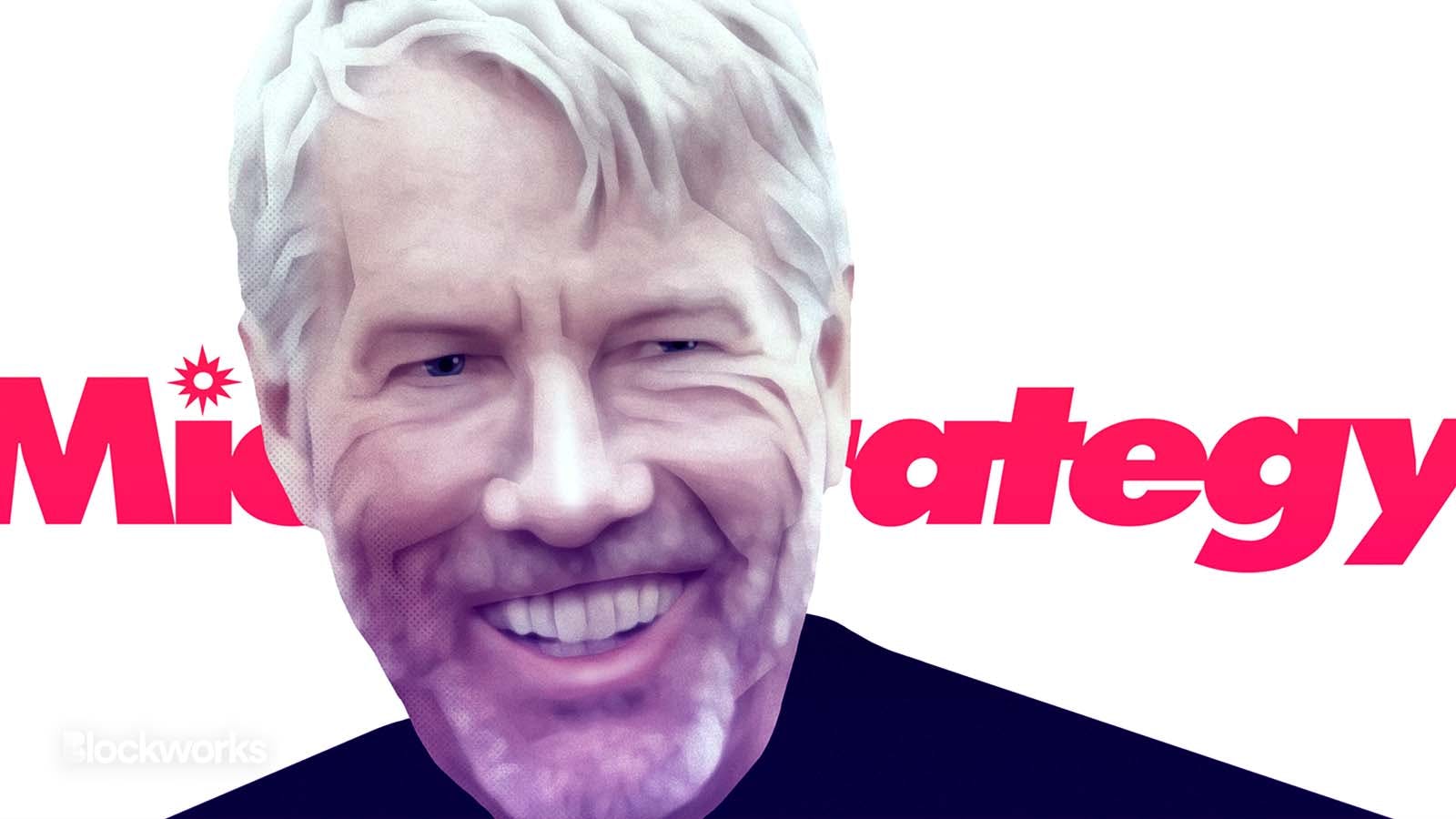Bitcoin-hungry MicroStrategy Posts $250M Net Loss in Q4
Business intelligence firm plans to continue building bitcoin arsenal that currently totals 132,500 BTC

Blockworks Exclusive Art by Axel Rangel modified by Blockworks
MicroStrategy’s net loss jumped quarter over quarter to $250 million — though executives said the firm is going to keep up its longtime strategy of buying and holding bitcoin on its balance sheet.
MicroStrategy’s stock closed the day at $292.13 — down about 14% in the past year, but up 100% from a month ago. The stock was down about 3% in early after-hours trading in New York.
MicroStrategy, co-founded by bitcoin bull Michael Saylor, increased its bitcoin holdings by 2,500 BTC in the fourth quarter to 132,500 BTC, according to the company’s earnings out Thursday.
“Our corporate strategy and conviction in acquiring, holding and growing our bitcoin position for the long term remains unchanged,” MicroStrategy Chief Financial Officer Andrew Kang said in a statement.
Bitcoin is up about 43% year to date after a brutal 2022 for the asset.
Saylor, who is MicroStrategy’s executive chairman, said Thursday that bitcoin was up 98% from August 2020 — when the company began its bitcoin acquisition strategy — to Feb. 1. The S&P 500 is up 23% over that span, he added.
The executive noted the bankruptcies of companies such as Voyager Digital, Celsius, BlockFi and FTX last year, as well as the collapse of tokens such as UST, LUNA and FTT.
“In our opinion these were all very weak use cases, they were very fragile structures and it was a matter of time before they did melt down,” Saylor said. “The meltdown of that has created short-term negative headwinds for bitcoin…but long-term the rationalization of the crypto market will be beneficial for bitcoin.”
MicroStrategy’s fourth quarter results came after the Virginia-based business intelligence firm reported a net loss of $27 million in the third quarter — a drastic improvement from its $1.1 billion net loss in the prior three-month period.
MicroStrategy’s digital asset impairment charges — which comes into play if the market value of bitcoin decreases below its market-adjusted purchase value — were $700,000 during the third quarter, compared to $918 million in the second.
Digital asset impairment charges reached roughly $198 million during the fourth quarter.
MicroStrategy sold 704 bitcoins on Dec. 22 for roughly $11.8 million, according to a filing — receiving about $16,700 per bitcoin. Two days later, the company bought 810 BTC for about $16,800 per token.
“MicroStrategy plans to carry back the capital losses resulting from this transaction against previous capital gains, to the extent such carrybacks are available under the federal income tax laws currently in effect, which may generate a tax benefit,” the filing stated.
Get the news in your inbox. Explore Blockworks newsletters:
- The Breakdown: Decoding crypto and the markets. Daily.
- 0xResearch: Alpha in your inbox. Think like an analyst.






